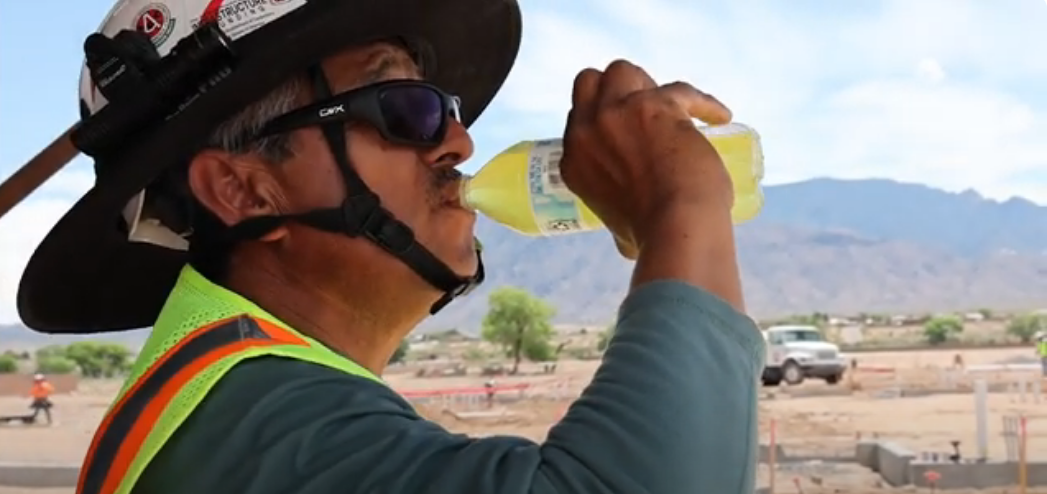Safe Jobs Require Smart Rules - Heat Illness
Protecting Workers Through Practical, Proven Safety – Ensuring Rules Support Schedules and Jobs

YOUTUBE VIDEO
New Mexico Construction is A Leader in Heat Safety
Construction employers have long implemented effective, commonsense practices to protect their workers from heat stress. AGC New Mexico member companies—representing thousands of field workers—provide:
- Cool drinking water access at all times
- Shaded rest areas on job sites
- Training on heat illness symptoms and prevention
- Buddy systems, safety briefings, and emergency protocols
- Acclimatization support for new or returning workers
Heat-Related Recordables in Construction Are Extremely Rare
A recent survey of AGC New Mexico member companies found:
- 81.8% of companies have never had a single heat-related OSHA recordable—in decades of operations. Examples include;
- 3.4 million man-hours since 1996 – zero heat-related incidents.
- 50 years in business – zero recordables.
- Combined 159 years in construction – zero recordables.
- Only 2 recordables in 10 years across 200+ employees.
| Unworkable Break Requirements Threaten Jobs and Critical Projects |
|---|
| Mandating 40-minute rest breaks for every 20 minutes of work above 90°F in direct sunlight would effectively halt jobsite operations, putting projects and jobs at risk, and delaying critical infrastructure such as schools, hospitals, and community facilities. |
The Real Risk: Worker Mental Health & Shift Disruption
Construction has the highest suicide rate of any industry—more than 4x the national average.
The proposed rule would force early-morning or overnight work to avoid heat thresholds, even though:
- OSHA and USDOL warn that extended or irregular shifts increase fatigue and mental health risks
- Many workers have family obligations, childcare needs, and evening apprenticeship classes
- Night work increases safety risks due to reduced visibility and disrupted sleep cycles
We Support What Works: Reasonable, Field-Tested Protections
Rather than rigid mandates, contractors support a practical approach that includes:
- Cool drinking water access (1 quart/hour per worker)
- Access to shaded areas and cool-down rest as needed
- Heat illness awareness training for new and returning workers
- Supervisor check-ins during acclimatization periods
- Pre-shift briefings, buddy systems, hydration reminders during high heat
- Heat illness protocols integrated into existing safety plans
The Cost of Overreach
While some advocate for the "strongest rule possible," the costs of overregulation are real:
| Job delays, training disruptions, and worker retention issues | Reduced worker safety as a result of adjusting work schedules to overnight shifts | Increased mental health strain on a workforce already in crisis | Skyrocketing construction costs for public infrastructure and private development - delaying critical infrastructure such as schools, hospitals, and community facilities |
What New Mexico Needs is a Balanced, Collaborative Approach
We urge the Environmental Improvement Board and New Mexico Environment Department to:
- Reject the current proposed rule as written
- Collaborate with industry experts and safety leaders to design a flexible, data-driven alternative
- Incentivize proven practices, not punish responsible employers
Take Action & Tell Your Story
| Public Comment Deadline: January 14, 2026 Submit your public comment and urge EIB to support a practical, effective alternative to the proposed rule. |
